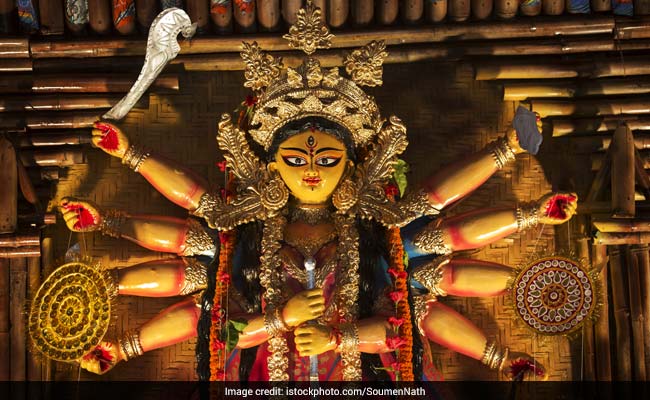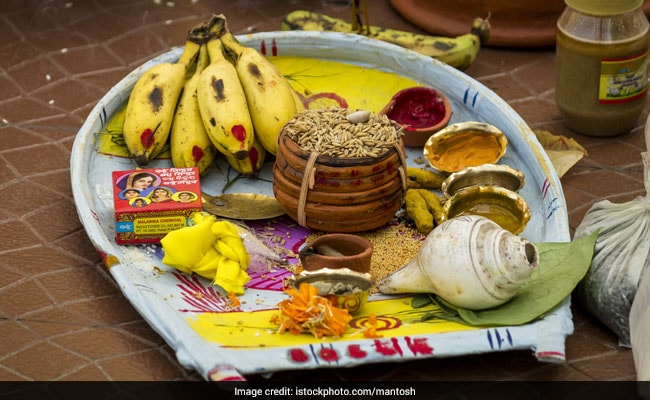
For Bengalis, Durga Puja is more than just a festival, it wouldnt be completely wrong to call it a five-day long carnival, preparation for which begins months in advance - from setting up pandals, preparing for various cultural activities like poetry recitation, singing, dancing, painting competitions to the simple joy of purchasing new clothes. Since centuries, Durga Puja celebrations have been a significant affair for Bengal, however the community gatherings and para (neighbourhood) preparation dates back to 17th- 18th century A.D, when several zamindars and aristocrats would hold Lavish pujas bringing together the entire locality under one roof. For instance the Aatchala Puja in Kolkata, which was started by renowned zamindar Lakshmikanta Majumder in the year 1610 or the Shobha Bazar Choto Rajbari at 33 Raja Nabakrishna Road in Kolkata, which was initiated in the year 1757. Even outside of Bengal, the trend of hosting lavish pujas with artful Goddess Durga idol and extravagant pandals has become popular, but Kolkata Durga Puja wins the popular votes across the country, in terms of hosting the best pujas.

For Bengalis, Durga Puja celebrations are a five-day long carnival
Mythological Significance of Durga Puja
Durga Puja festival marks the battle of Goddess Durga with the powerful buffalo demon Mahishasura, and her emerging victorious over the evil. The demon king Mahishasura, performed severe austerities and prayers for years to seek Lord Brahma's boon of immortality. Pleased by his devotion, Lord Brahma did confer upon him many boons, but the boon of immortality; instead, Brahma gave him a boon saying that his death would happen only at the hands of a woman. On hearing the boon, Mahishasura was thrilled and considered him immortal, thinking which woman would ever match up to his strength and take his life.
With this belief, he waged a war against the Devas, with his army of asuras. In the battle, the Devas were defeated and so they approached the trinity of Shiva, Brahma and Vishnu to seek help. The three great gods combined their divine energies and created a woman and thus gave rise to Goddess Durga, the embodiment of Shakti herself. Durga led a battle against Mahishasura and killed him, thus fulfilling the prophecy that he would die at the hands of a woman.

Durga Puja festival marks the battle of Goddess Durga with the powerful buffalo demon Mahishasura
The festival marks the victory of Good over Evil, but it also is in part a harvest festival that marks the goddess as the motherly power giving rise to all life and creation
Durga Puja 2017 Date and Time
Beautifully decorated clay idols of Goddess Durga, Saraswati, Laxmi, Kartik and Ganesh are unveiled to the devotees ad spectators on the 5th(Panchami) or 6th day(Shashti). On the 5th day, many pandals arrange 'Ananda Mela' , which is a tradition of local women sharing their culinary specialities the evening before the puja begins. From delicious chops, cutlets, bhajas(fritters) to sweets and other snacks, if you call yourself a true foodie, make sure you manage to visit one of the Anand Mela celebrations.
On the Pooja days, devotees wake up early in the morning, and observe a fast until the Durga Anjali that takes place early in the morning, after which they break their fasts with fruits and sweets. Soon after the cultural activities and programs kickstarts, and so does the joy of pandal hopping. With so many beautiful pandals lined up across the city, several families try to make it a point to visit as many pandals in a day as possible.
In the afternoon, the ritualistic bhog, comprising delicious khichdi, papad, mixed vegetable, tomato chutney, begun bhaja (eggplant fritters) is served, and of course the generous heaping of payesh and roshogolla. On the day of Ashtami, which is often considered to be the most important day of the pooja, the bhog also has special additions most common being rice in place of khichdi, chana dal, a curry of paneer, mixed vegetables, begun bhaja, tomato chutney, papad, rajbhog and payesh, which is sure to have you happily stuffed through the day.
But the food fest doesn't end here. The pandals are often lined with many food stalls, selling the best Kathi Rolls, kebabs, fried fish, biryani, noodles, cutlets, chops and various other savoury and sweet snacks. The round of gorging on delicious food ends only on the evening of Vijay Dashami with a good serving of Mutton Biryani or some Mutton Kosha and loochi (a close cousin of poori).
Here is a detailed calendar of Durga Puja date and day this year
| Durga Puja Calendar | ||
| Events | Day | Date |
| Mahalaya 2017 | Tuesday | 19-Sep-17 |
| Maha Panchami 2017 | Monday | 25-Sep-17 |
| Maha Shasthi 2017 | Tuesday | 26 September 2017 |
| Maha Saptami 2017 | Wednesday | 27 September 2017 |
| Maha Ashtami 2017 | Thursday | 28 September 2017 |
| Maha Navami 2017 | Friday | 29 September 2017 |
| Vijaya Dashami 2017 | Saturday | 30 September 2017 |
Here's Wishing you all a very Happy Durga Puja 2017
Track Latest News Live on NDTV.com and get news updates from India and around the world

